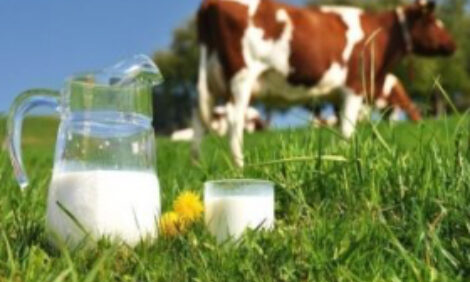



Beef Markets: Where Are They Headed in 2015?
Beef prices will be supported by tight supplies in 2015, says a levy board analyst.
Brazil is the only major beef producing nation seeing positive production growth, as Australia and the US look ahead to a two and six per cent contraction respectively.
This means that, globally, beef will remain in tight supply and “underpin” values, according to Quality Meat Scotland’s head of economics services, Stuart Ashworth.

Currently, prices are running around 25 per cent higher this year than last, states the Food and Agricultural Organisation of the United Nations.
“The note of caution from the FAO, though, is that meat prices in general are only 13 per cent higher than a year ago while cereal prices have fallen 6,” said Mr Ashworth.
“These relative movements in competing food prices may lead to some pressure on beef prices and the FAO data shows global beef prices little changed over the past three months.
“Nevertheless, the general tightness of global beef supplies over the next 12 months will help to underpin producer prices.”
UK Picture
Like Europe, the UK will see fewer cattle to slaughter in 2015, explained Mr Ashworth.
Great British total calf registrations between January and October this year lifted 1.5 per cent higher than last year, while in Scotland the increase was a little less at 1 per cent.
“While this increase in calf numbers is welcome it will be 18 months before this begins to be reflected in increased slaughter cattle numbers. In the shorter term our cattle databases indicate fewer cattle in the supply base,” said Mr Ashworth.
The fact that the UK and Ireland have comprehensive cattle databases makes it easier to assess future cattle supplies and changes in the sector’s behaviour. The latest update of GB calf registrations, presenting figures to the end of October, highlights this fact.
“The data shows that over the first six months of 2014, GB beef-sired calf registrations increased by 0.8 per cent, while Scottish registrations were unchanged.
“However by the end of October total beef calf registrations during 2014 in GB had increased by 1.5 per cent and by 1.7 per cent in Scotland – this may be an indicator of a switch back to autumn calving.
“Scottish beef calf registrations during September and October, for example, increased by more than 10 per cent compared to last year. However, it may equally be linked to the final remnants of weather effects from spring 2013.”
Meanwhile dairy-sired calf registrations are higher than 12 months ago across GB as a whole, reflecting the reported increase in dairy cow numbers though dairy-sired registrations were down in Scotland.
However, the number of cattle aged between 18 and 24 months of age on GB farms in October was down around 6 per cent with the number of cattle aged between six and 18 months down 1 per cent on year earlier levels.
“Meanwhile, data from Ireland shows a similar pattern with calf registrations in 2013 down nearly 5 per cent but, like the UK, registrations began to run ahead of year earlier levels from March 2014. Similarly, most European countries reported fewer one to two-year-old cattle on their holdings in June 2014."


